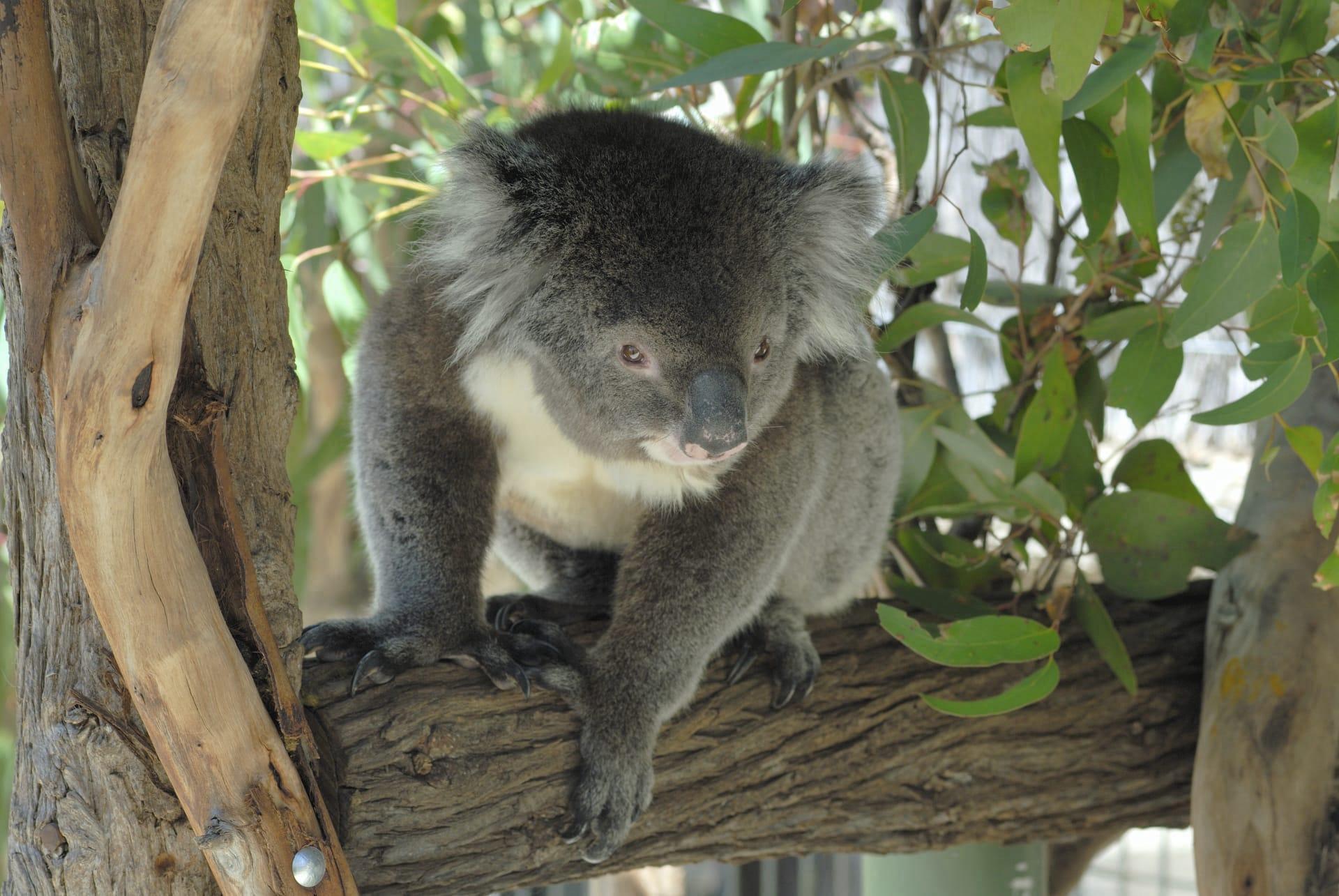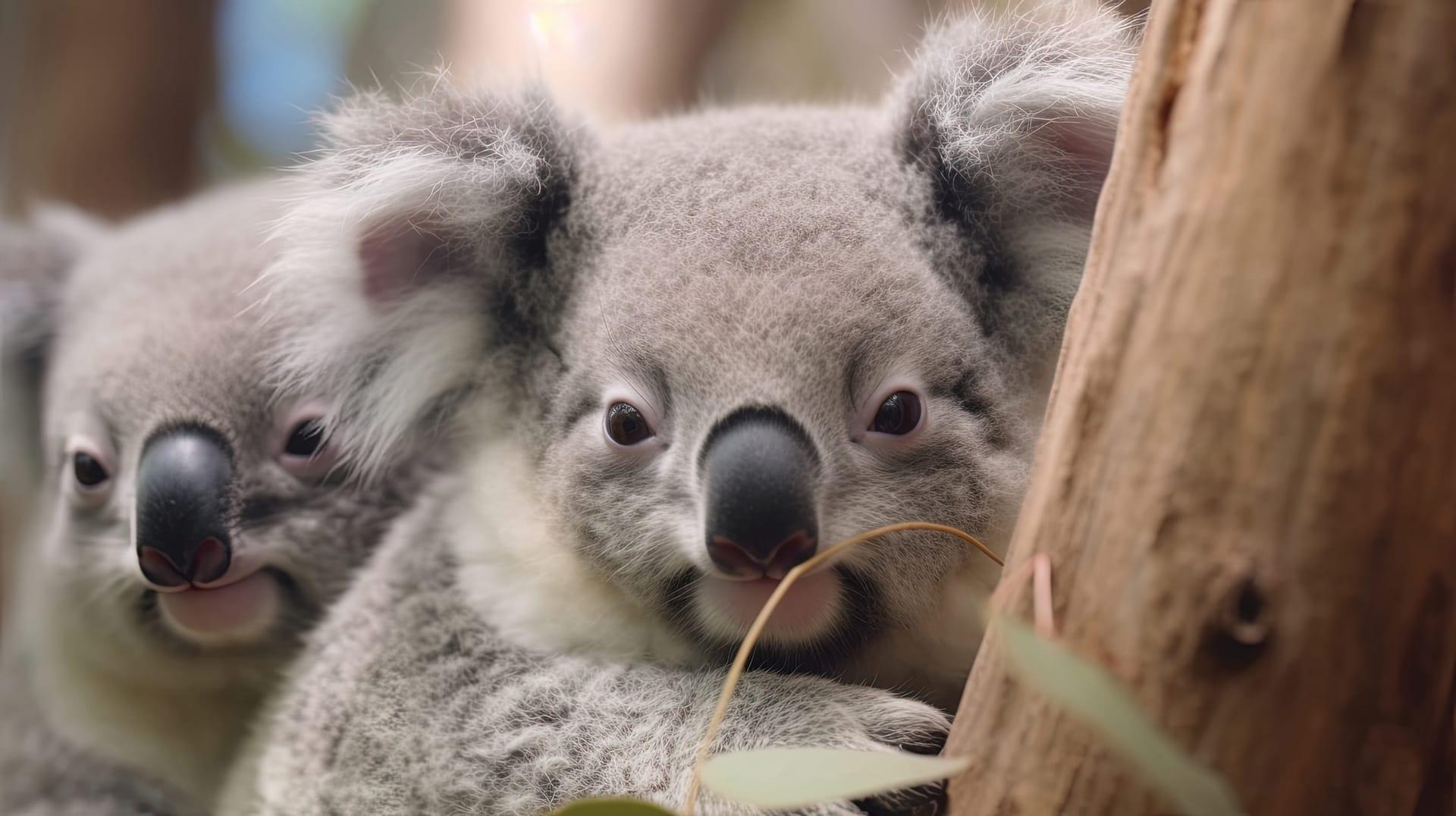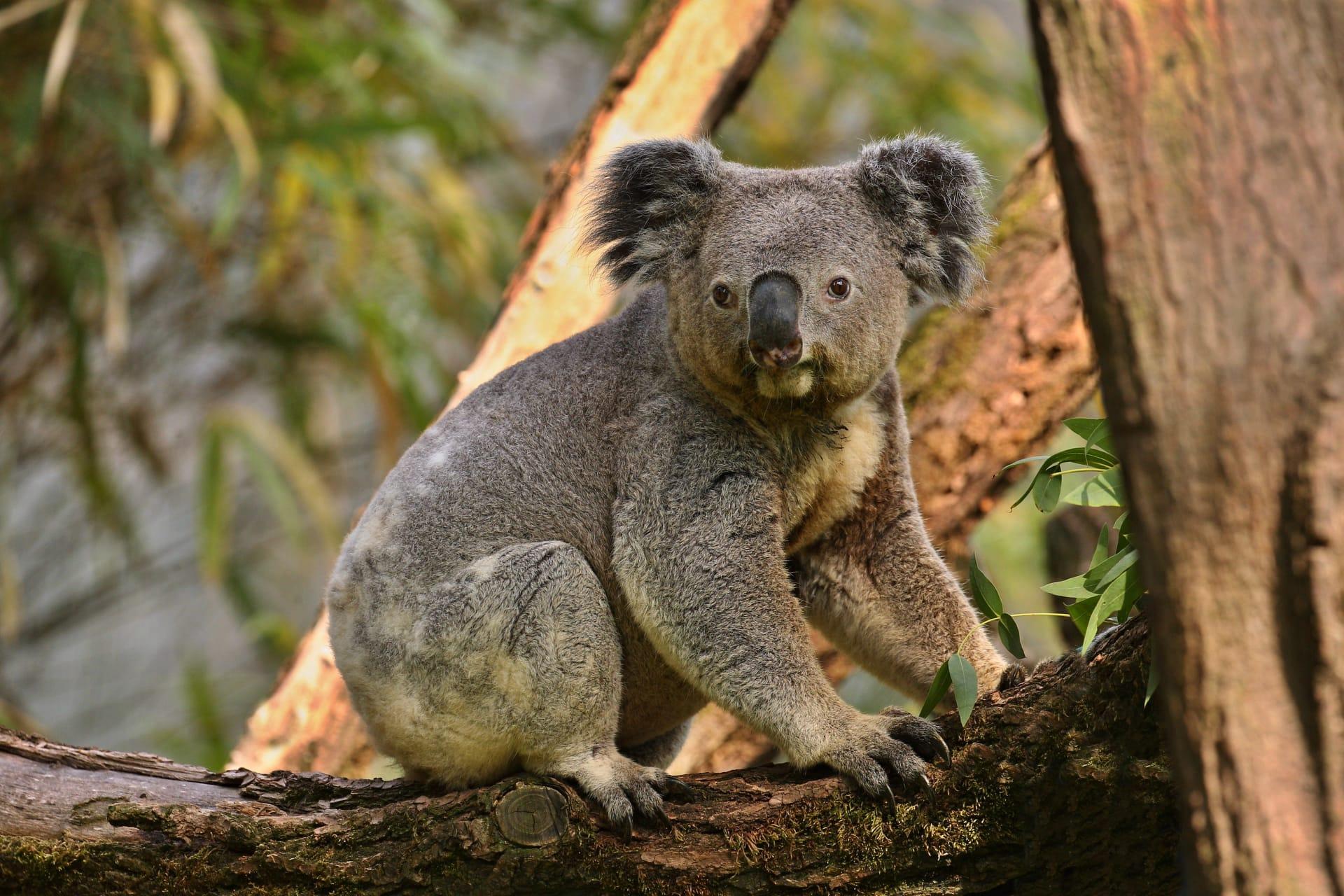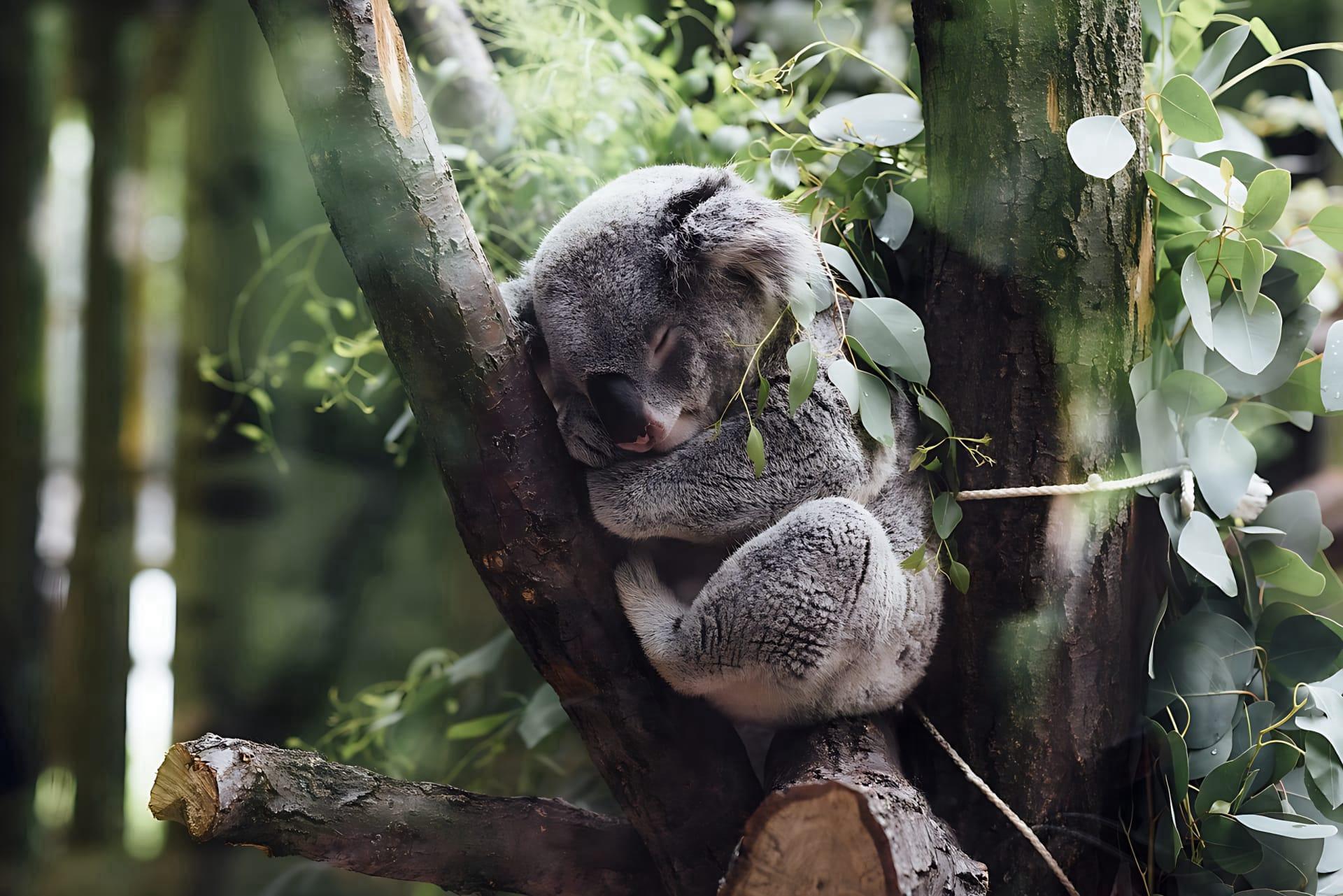Koala
- Home /
- Mini Encyclopedia /
- Animal /
- Koala
1
Koalas, scientifically named Phascolarctos cinereus, are marsupials, not bears as often mislabeled. Belonging to the family Phascolarctidae, they are the only extant representatives of their family. The genus Phascolarctos is derived from Greek words meaning 'pouch' and 'bear,' highlighting their marsupial nature and bear-like appearance. Koalas are further classified into three subspecies based on slight variations in their size and fur color: the Northern Koala (P. c. adustus), the Intermediate Koala (P. c. cinereus), and the Southern Koala (P. c. victor).
Koalas are native to Australia and are distributed along its eastern coast, spanning from the northeastern region of Queensland to the southeastern part of South Australia. Their habitat is primarily in eucalypt woodlands, as these trees provide both their food and shelter. The population density of koalas varies significantly across their range, with denser populations found in the southern regions compared to the more sparse northern populations. Environmental factors like climate, availability of suitable habitat, and human impacts influence their distribution.

2
Question: Do koalas drink water?
Answer: A common misconception about koalas is that they get all their hydration from eucalyptus leaves and do not need to drink water. While it's true that eucalyptus leaves are a primary water source for them, koalas do drink water, especially during times of drought or extreme heat. Their name 'koala' even originates from an Aboriginal word meaning 'no drink,' which has contributed to this myth. However, recent observations and studies have shown that koalas do approach water sources like streams or artificial water stations, especially when their leafy diet doesn't provide sufficient moisture.

3
Koalas have evolved several survival strategies to adapt to their environment. One key strategy is their specialized diet: they feed almost exclusively on eucalyptus leaves, which are toxic to most animals. Koalas have a unique digestive system with a long cecum that allows them to detoxify the chemicals found in eucalyptus leaves. Another aspect of their survival strategy is their sedentary lifestyle. Koalas sleep up to 18-20 hours a day to conserve energy, as their diet is low in nutrition and high in fibrous content. They also have a slow metabolic rate, which further aids in energy conservation.
Reproduction is another critical survival strategy for koalas. Females usually give birth to one joey per year, which stays in the mother's pouch for about six months. After leaving the pouch, the joey clings to its mother's back for further protection and nurturing. This extended care ensures that the young have a better chance of survival in the wild.

4
In their ecosystem, koalas play a significant role in maintaining the health of eucalypt forests. They help control the growth of eucalypt trees by feeding on them, which can prevent overgrowth and maintain a balance in the forest ecosystem. Their selective feeding habits also promote diversity in the forest by allowing less preferred tree species a better chance to flourish.
Koalas also contribute to the biodiversity of their habitat. Their droppings help in the dispersal of eucalypt seeds, aiding in forest regeneration. Moreover, they serve as a vital food source for predators like pythons and birds of prey. This predatory relationship helps to keep the koala population in check and maintains a balanced ecosystem. Additionally, koalas are an iconic symbol of Australian wildlife, attracting tourism and awareness for conservation efforts.

5
Film: "Koala: A Life in the Trees" is a documentary from Australia, released in 2020. This film provides an intimate look at the life of koalas in their natural habitat. It explores their daily routines, survival challenges, and the impact of environmental changes on their population. The documentary highlights the importance of conservation efforts and the delicate balance of the ecosystem that koalas inhabit.
Book: "The Secret Life of Koalas" by Australian author Deborah Tabart, published in 2018, delves into the fascinating world of koalas. This book covers various aspects of their behavior, biology, and the threats they face in the wild. Tabart combines scientific research with engaging narrative to bring the story of koalas to life.
Book: "Koalas: Moving Portraits of Serenity" by British photographer Suzi Eszterhas, released in 2016, offers a visual journey into the lives of koalas. The book features stunning photography that captures the beauty and unique characteristics of these marsupials. Eszterhas' work also sheds light on the conservation issues surrounding koalas and their habitat.